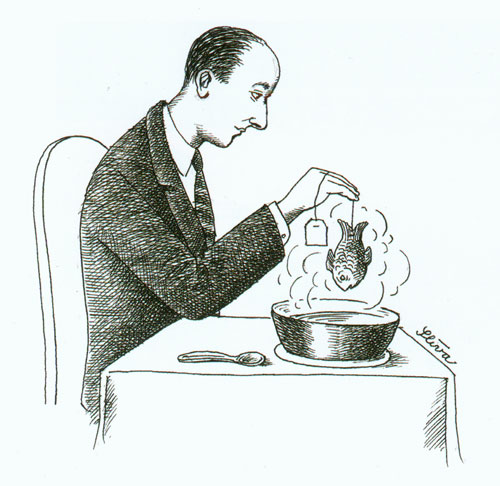This is a work of fiction. Names, characters, businesses, places, events and incidents are either the products of the author’s imagination or used in a fictitious manner. If you find any resemblance to actual persons, living or dead, or actual events, deadly or lively, or actual molecules, carbons or heteroatoms, it is purely coincidental.
Part 7
(here is Part 1, Part 2, Part 3, Part 4, Part 5, Part 6, Part 8)
The company became more dull and quiet place after our old CEO was deposed and the biologist friend fired. We were wrapping up old projects; there wasn’t much drive to do new things until we had funding to go to clinic. The research director urged us to use up all remaining vacation time and transfer nothing to the next year.
A major cleanup of the satellite lab where our CEO used to make drugs took place in December: The Canadian chemistry colleague did it all by himself one early morning. He found some previously overlooked hand-written experimental notes that our CEO left behind, he got rid of that incriminating evidence. My colleague also threw away a whole bunch of new surplus glassware – maybe thousand USD worth of flasks – and also the empty MBraun THF drying columns stored there for repacking with new sorbent. When I asked him why he threw out all that good stuff without telling me (as I could have found some place for it), he flipped out: it was none of my effing business, and that he did not tell me because he did not want my help.
The director cautiously mentioned once that maybe we should start updating our resumes if we don’t see any new major investments coming in by the next summer. It was a half-truth like everything he says – as I understand now. There was a board meeting at the end of November which confirmed our research director as the new CEO. At the same time they already made plans complete with the list of people, to shut down the company research if the financial situation did not improve by the next meeting in 3 months time. Of course they kept this secret until the last moment. I think my Canadian chemist friend learned about these plans and that we were getting rid of the satellite labs and offices. He was very worried but he couldn’t tell me.
Another curious thing happened right after the board meeting. The company hired HR external consultant in early December “to help us with the management transition” – and she wanted to interview me. She was apparently asked by the Board of Directors to write a report based on a “strict confidentiality of the interviewed employees”, to identify any hidden problem within our company…
I wasted two hours with the HR consultant at the nearby hotel where she was talking to the employees – we had a cautious waltzing-kind of conversation: I outlined how our former CEO was buying precursors and cooking drugs at the company and that he recruited the student technician to help him with MDMA scaleup, she was nodding and taking notes, and the next question she asked without blinking was if I was ever aware of anything illegal at the company. Obviously she already knew and that is why she was asking me the same question for the second or the third time if she did not get the answer she needed. At the same time she was encouraging me and making quick leading comments whenever she liked what I was telling her. I backed out of that interview: it was clear that someone at the Board retained her to spin the story and provide an alibi if the scandal became public. I told the HR consultant that I knew our CEO was cooking drugs for more than a year and I could share a lot more about it with anyone who wanted to know. She did not want to know.
Meanwhile, our business development guy was giving optimistic pep talks how things are going to pick up real soon, early next year. Our research director was traveling quite a bit and always telling us he was going to see prospective investors, talking to the banks and VCs. The management actually used to shun the VC money before – they said they couldn’t get a decent long-term deal with VCs and they preferred rich private individuals instead. (Some of them seemed rather clueless about biotech and research. We used to have private tours quite often – we would get a reminder to set up large scale experiments and adopt busy lab activity to make us look more impressive to the visitors. The big polymerization reactors with elaborate monomer manifolds in my hood were the spot around which the visitors usually congregated and listened to the show-and-tell by our CEO. We used to joke about putting up signs “Scientists are not pets – Respect their wildness”).
In early January 2016 our company finally settled the whistleblower retaliation/wrongful termination legal action brought by my biology friend, out of court, with a good amount of cash. It was pretty sketchy because our research director did not tell the attorney representing our company about the drug scandal – he prefered the company lawyer to be totally oblivious during the settlement negotiations. I did not realize that if the company lawyer knew more, she wouldn’t do it – she would have to recuse herself for client conflict because she used to represent the family of our former CEO.
I took most of what went on in the last two months actually as a hopeful change, quite a cleanup. I also started on a new exploratory project we wanted to do for a long time, and it was great – I thought that I did not have to worry about all that nastiness with the illicit drug cover up anymore.
I did not get to finish the new project: I suppose it is a pretty sure sign when you have to haggle with your research director about purchasing a pack of NMR tubes that he does not want to order for you (or explain that you aren’t going to need them anyway). We did one last liquid He fill with our NMR magnet – all chemists plus our research director, working and joking together, relaxed – I can still picture it. The helium fill went smoothly and it was very peaceful.

 Credit: Jiri Sliva
Credit: Jiri Sliva


